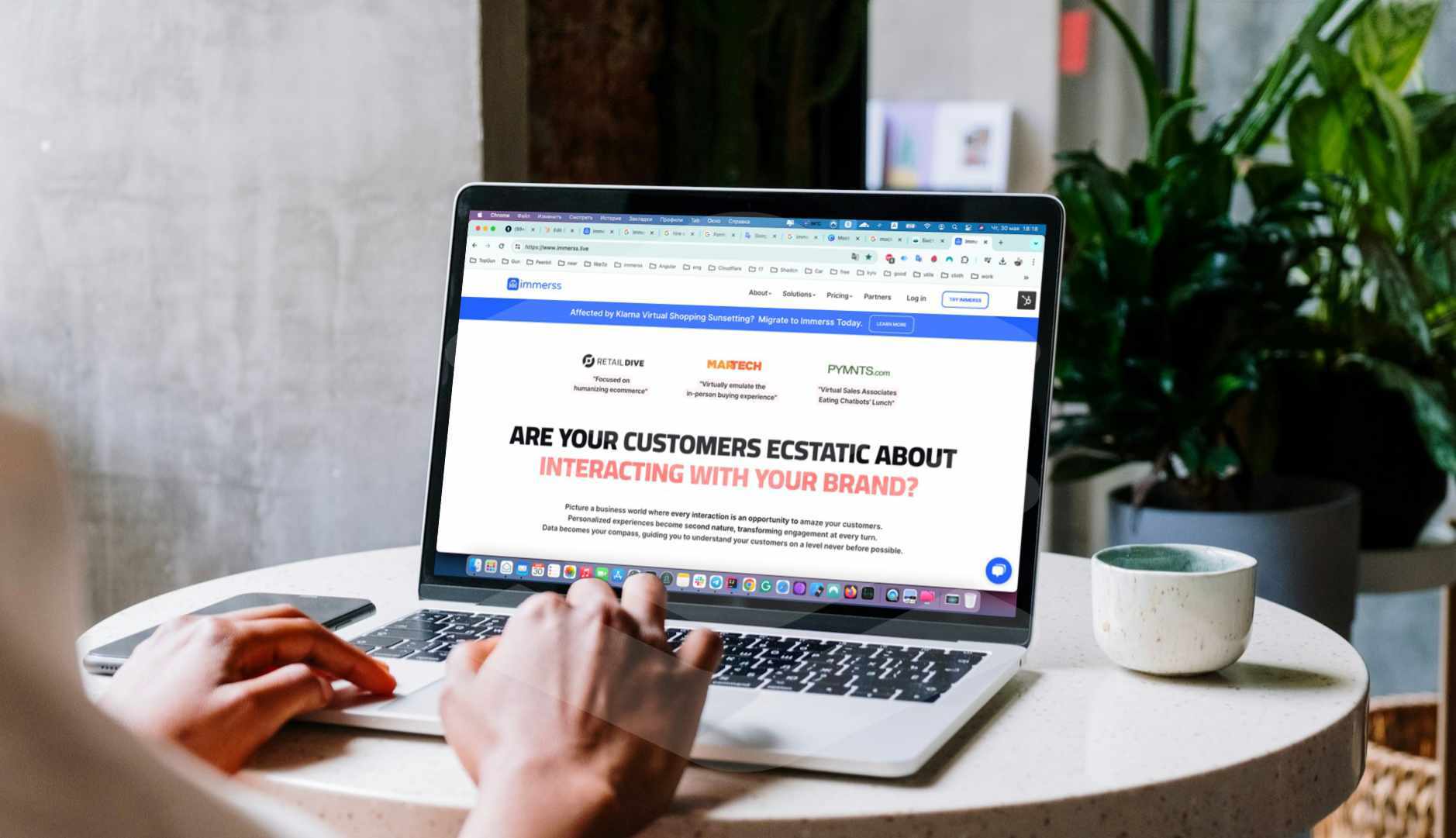Introduction: The Evolution of Customer Relationships in E-commerce
Digital clienteling represents the next evolution in customer relationship management, transforming impersonal online shopping experiences into personalized, relationship-driven interactions that mirror the best aspects of in-store service. Unlike traditional customer service, digital clienteling focuses specifically on building long-term customer relationships through data-driven personalization and real-time engagement.
The concept extends traditional retail clienteling—where sales associates build relationships with key customers based on their preferences and purchase history—into the digital realm. This approach addresses a critical gap in e-commerce: the lack of human connection that often leaves customers feeling like they’re shopping from a vending machine rather than engaging with a trusted brand.
What is Digital Clienteling? Understanding the Fundamentals
Digital clienteling is a strategic approach to customer relationship management that combines personal service with digital technology to create meaningful connections between brands and customers online. Unlike generic customer service interactions, digital clienteling leverages customer data, purchase history, and behavioral insights to deliver personalized experiences that build loyalty and drive sales.
Key Components of Digital Clienteling:
Data-Driven Personalization: Access to comprehensive customer profiles including purchase history, preferences, browsing behavior, and communication preferences enables sales associates to provide tailored recommendations and service.
Real-Time Engagement: Live chat, video calls, and interactive shopping sessions that connect customers directly with trained sales professionals who can provide expert guidance and product demonstrations.
Relationship Continuity: Ongoing customer relationships that extend beyond single transactions, with dedicated associates who understand individual customer needs and preferences.
Omnichannel Integration: Seamless experiences across all customer touchpoints, whether customers engage through websites, mobile apps, social media, or in-store visits.
The Business Case for Digital Clienteling in E-commerce
Addressing Critical E-commerce Challenges
Low Conversion Rates: The average e-commerce conversion rate hovers around 2%, largely due to the impersonal nature of online shopping. Digital clienteling addresses this by providing the human connection and expert guidance that customers need to make confident purchasing decisions.
High Cart Abandonment: Approximately 70% of online shopping carts are abandoned, often because customers have unanswered questions or concerns. Real-time clienteling support can address these hesitations immediately, reducing abandonment rates significantly.
Customer Acquisition Costs: With digital advertising costs continuously rising, businesses need more efficient ways to convert traffic into sales. Digital clienteling maximizes the value of existing website traffic by improving conversion rates rather than just driving more visitors.
Limited Customer Lifetime Value: Without personal relationships, customers often make single purchases and move on. Digital clienteling builds ongoing relationships that increase repeat purchases and customer lifetime value.
Measurable Business Impact
Companies implementing comprehensive digital clienteling platforms report significant performance improvements:
- Conversion Rate Increases: Up to 28% conversion rates compared to industry averages of 2%
- Average Order Value Growth: 57% increase in average order value through personalized recommendations and upselling
- Customer Retention Improvement: 40% improvement in customer lifetime value through enhanced relationships
- Reduced Return Rates: 21% return rate compared to 24% industry average due to better product guidance
How Digital Clienteling Platforms Work: Technology Behind the Experience
Core Platform Capabilities
Customer Data Integration: Digital clienteling platforms integrate with existing CRM systems, e-commerce platforms, and customer databases to provide sales associates with comprehensive customer profiles. This includes purchase history, preferences, browsing behavior, and previous interaction records.
Real-Time Communication Tools: Built-in video chat, voice calling, screen sharing, and co-browsing capabilities enable sales associates to provide personalized assistance. These tools are embedded directly into the shopping experience, eliminating the need for customers to switch between applications.
Product Demonstration Features: Interactive product showcases, virtual try-ons, and live demonstrations help customers understand products better, addressing concerns that might otherwise lead to cart abandonment.
Workflow Management: Backend dashboards enable sales teams to manage customer queues, track interactions, monitor performance metrics, and coordinate follow-up activities.
Technical Implementation
Seamless Integration: Modern digital clienteling platforms integrate with popular e-commerce systems including Shopify, Salesforce Commerce Cloud, WooCommerce, BigCommerce, and Magento. The integration remains invisible to customers while providing powerful tools to sales teams.
Mobile Optimization: Cross-platform compatibility ensures consistent experiences across desktop computers, tablets, and mobile devices. Native mobile apps enable sales associates to provide service from anywhere.
White-Label Customization: Platforms can be fully branded to match retailer visual identity, ensuring the clienteling experience feels like a natural extension of the brand rather than a third-party tool.
Analytics and Reporting: Comprehensive performance tracking provides insights into customer behavior, sales associate effectiveness, and overall program ROI.
Digital Clienteling Success Story: Lucchese Boot Company Case Study
The Challenge: Bridging Online and Offline Sales Excellence
Lucchese, a 138-year-old custom bootmaker, exemplifies the challenges many traditional retailers face when transitioning to e-commerce. The company’s sales staff excelled at in-person consultations, understanding customer needs and providing expert guidance for custom boot orders. However, their website relegated customer interactions to basic chat functions that failed to leverage their sales expertise.
The company’s leadership recognized that traditional CRM chat features weren’t sufficient for their business model. They needed a way to connect website visitors with trained sales professionals who could provide the same level of service available in their physical showrooms.
The Implementation: Live Commerce Transformation
Lucchese partnered with Immerss in July 2019 to implement a comprehensive digital clienteling platform. The solution went live in 2020, just as the pandemic was forcing retailers to reimagine their customer engagement strategies.
Key Implementation Elements:
Dedicated Sales Team: Five sales associates were allocated specifically to handle digital clienteling interactions, providing specialized service for online customers.
Digital Showroom: High demand for virtual consultations led to the creation of a dedicated digital showroom environment for product demonstrations and consultations.
Integrated Shopping Experience: Customers could browse products, receive personalized recommendations, and complete purchases all within the same interactive session.
Remote Work Enablement: The platform allowed sales staff to work from home during the pandemic, maintaining employment while continuing to serve customers effectively.
The Results: Transformational Business Impact
Operational Continuity: The platform enabled Lucchese to maintain full sales operations during pandemic lockdowns without laying off staff members.
Increased Demand: Customer response was so positive that the company expanded their digital clienteling program and allocated additional resources to handle growing demand.
Enhanced Customer Experience: Customers gained access to the same level of expert guidance and personalized service they would receive in physical showrooms, regardless of their location.
Business Model Evolution: The success of digital clienteling fundamentally changed how Lucchese approaches customer relationships, making it a core component of their ongoing strategy.
Implementing Digital Clienteling: Best Practices and Strategies
Phase 1: Foundation Building (30-60 Days)
Staff Training and Preparation
- Train sales associates on digital communication best practices
- Develop product demonstration protocols for video interactions
- Create customer service scripts adapted for digital channels
- Establish performance metrics and quality standards
Technology Integration
- Integrate clienteling platform with existing e-commerce and CRM systems
- Test all communication tools and features thoroughly
- Customize branding and visual elements to match company identity
- Set up analytics and reporting dashboards
Process Development
- Define customer qualification criteria for clienteling services
- Create escalation procedures for complex inquiries
- Establish scheduling systems for appointments and follow-ups
- Develop customer data management protocols
Phase 2: Launch and Optimization (60-90 Days)
Gradual Rollout
- Begin with select customer segments or product categories
- Monitor performance metrics and customer feedback closely
- Adjust staffing levels based on demand patterns
- Refine processes based on real-world usage
Performance Monitoring
- Track conversion rates, average order values, and customer satisfaction
- Analyze customer interaction patterns and preferences
- Identify top-performing sales associates and successful strategies
- Monitor technical performance and system reliability
Continuous Improvement
- Gather feedback from both customers and sales staff
- Implement process improvements based on lessons learned
- Expand successful strategies to additional customer segments
- Develop advanced features and capabilities
Phase 3: Scale and Expansion (90+ Days)
Program Expansion
- Extend clienteling services to additional product categories
- Increase staff capacity based on demonstrated ROI
- Develop specialized expertise for different customer segments
- Create advanced training programs for sales associates
Strategic Integration
- Integrate clienteling data with broader marketing strategies
- Develop customer loyalty programs that leverage relationship data
- Create referral programs that capitalize on satisfied customers
- Establish partnerships that enhance the clienteling experience
Measuring Digital Clienteling Success: Key Performance Indicators
Primary Business Metrics
Conversion Rate Improvement: Track the percentage of clienteling interactions that result in purchases compared to standard website conversion rates.
Average Order Value (AOV) Growth: Measure how personalized recommendations and expert guidance impact purchase amounts.
Customer Lifetime Value (CLV) Enhancement: Monitor how clienteling relationships affect long-term customer value and repeat purchase behavior.
Return on Investment (ROI): Calculate the financial return from clienteling program investments, including technology costs and staff time.
Customer Experience Indicators
Customer Satisfaction Scores: Regular surveys and feedback collection to measure satisfaction with clienteling interactions.
Net Promoter Score (NPS): Track customer willingness to recommend the brand based on their clienteling experiences.
Engagement Duration: Monitor how long customers spend in clienteling sessions compared to standard website visits.
Follow-up Engagement: Measure response rates to post-interaction communications and relationship-building efforts.
Operational Performance Metrics
Sales Associate Productivity: Track individual and team performance metrics including calls handled, conversion rates, and customer satisfaction.
Response Time Optimization: Monitor how quickly customers receive assistance and the impact on satisfaction and conversion.
Technology Performance: Ensure platform reliability, speed, and user experience quality across all devices and channels.
Scalability Indicators: Assess the program’s ability to handle growing demand without compromising quality.
The Future of Digital Clienteling: Emerging Trends and Technologies
AI and Machine Learning Integration
Predictive Customer Insights: Advanced analytics that predict customer needs and preferences based on behavior patterns, enabling proactive outreach and personalized experiences.
Automated Personalization: AI-powered product recommendations and content customization that enhances the human element rather than replacing it.
Intelligent Routing: Smart systems that connect customers with the most appropriate sales associates based on expertise, availability, and customer profile matching.
Natural Language Processing: Enhanced chat and voice interactions that better understand customer intent and emotional state.
Augmented Reality and Virtual Experiences
Virtual Product Trials: AR technology that allows customers to visualize products in their environment or on themselves during clienteling sessions.
3D Product Demonstrations: Immersive product experiences that provide detailed views and interactions impossible in traditional e-commerce.
Virtual Showrooms: Sophisticated digital environments that replicate the ambiance and experience of physical retail spaces.
Interactive Styling: AI-powered styling tools that work in conjunction with human expertise to create personalized looks and recommendations.
Omnichannel Evolution
Social Commerce Integration: Seamless clienteling experiences across social media platforms where customers discover and engage with brands.
Voice Commerce Support: Integration with smart speakers and voice assistants to provide clienteling services through audio interactions.
IoT Connectivity: Connected devices that provide additional customer insights and service opportunities.
Cross-Platform Consistency: Unified experiences that maintain relationship continuity across all customer touchpoints.
Conclusion: Digital Clienteling as Competitive Advantage
Digital clienteling represents more than just an upgrade to customer service—it’s a fundamental reimagining of how brands build relationships and drive sales in the digital economy. Companies that successfully implement comprehensive digital clienteling strategies don’t just improve their conversion rates; they create sustainable competitive advantages through superior customer relationships.
The technology enables businesses to scale the personal touch that drives sales while maintaining the efficiency and reach that digital commerce provides. As customer expectations continue to evolve and competition intensifies, digital clienteling becomes not just an opportunity for differentiation but a necessity for survival in the modern retail landscape.
For businesses ready to transform their customer relationships and dramatically improve their e-commerce performance, digital clienteling offers a proven path forward. The question isn’t whether to implement these capabilities, but how quickly they can be deployed to capture the competitive advantage they provide.
Ready to transform your customer relationships and boost conversions? Book your live demo to discover how Immerss can help your business implement world-class digital clienteling capabilities.



